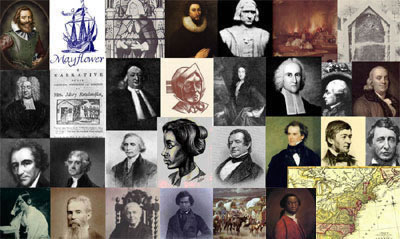Instead of carefully defining realistic characters through a wealth of detail, as most English or continental novelists did, Hawthorne, Melville, and Poe shaped heroic figures larger than life, burning with mythic significance. The typical protagonists of the American Romance are haunted, alienated individuals. Hawthorne's Arthur Dimmesdale or Hester Prynne in The Scarlet Letter, Melville's Ahab in Moby-Dick, and the many isolated and obsessed characters of Poe's tales are lonely protagonists pitted against unknowable, dark fates that, in some mysterious way, grow out of their deepest unconscious selves. The symbolic plots reveal hidden actions of the anguished spirit.
One reason for this fictional exploration into the hidden recesses of the soul is the absence of settled, traditional community life in America. English novelists – Jane Austen, Charles Dickens (the great favorite), Anthony Trollope, George Eliot, William Thackeray – lived in a complex, well-articulated, traditional society and shared with their readers attitudes that informed their realistic fiction. American novelists were faced with a history of strife and revolution, a geography of vast wilderness, and a fluid and relatively classless democratic society. American novels frequently reveal a revolutionary absence of tradition. Many English novels show a poor main character rising on the economic and social ladder, perhaps because of a good marriage or the discovery of a hidden aristocratic past. But this buried plot does not challenge the aristocratic social structure of England. On the contrary, it confirms it. The rise of the main character satisfies the wish fulfillment of the mainly middle-class readers.In contrast, the American novelist had to depend on his or her own devices. America was, in part, an undefined, constantly moving frontier populated by immigrants speaking foreign languages and following strange and crude ways of life. Thus the main character in American literature might find himself alone among cannibal tribes, as in Melville's Typee, or exploring a wilderness like James Fenimore Cooper's Leatherstocking, or witnessing lonely visions from the grave, like Poe's solitary individuals, or meeting the devil walking in the forest, like Hawthorne's Young Goodman Brown. Virtually all the great American protagonists have been "loners." The democratic American individual had, as it were, to invent himself.
The serious American novelist had to invent new forms as well hence the sprawling, idiosyncratic shape of Melville's novel Moby-Dick and Poe's dreamlike, wandering Narrative of Arthur Gordon Pym. Few American novels achieve formal perfection, even today. Instead of borrowing tested literary methods, Americans tend to invent new creative techniques. In America, it is not enough to be a traditional and definable social unit, for the old and traditional gets left behind; the new, innovative force is the center of attention.

No hay comentarios:
Publicar un comentario